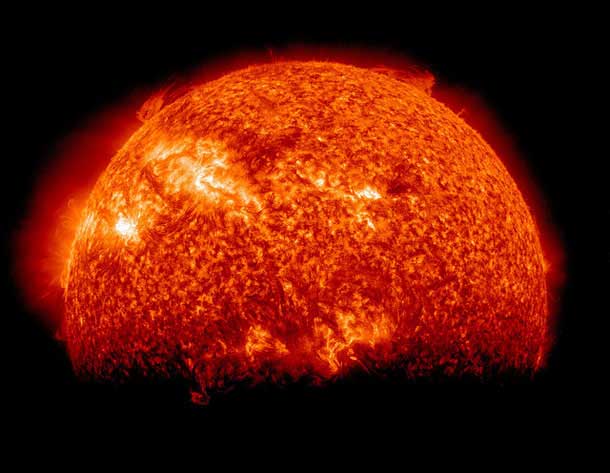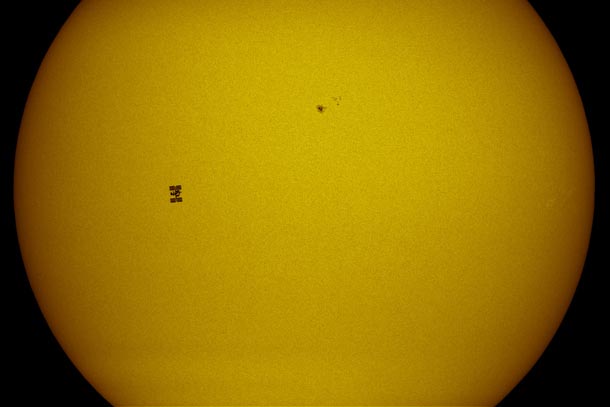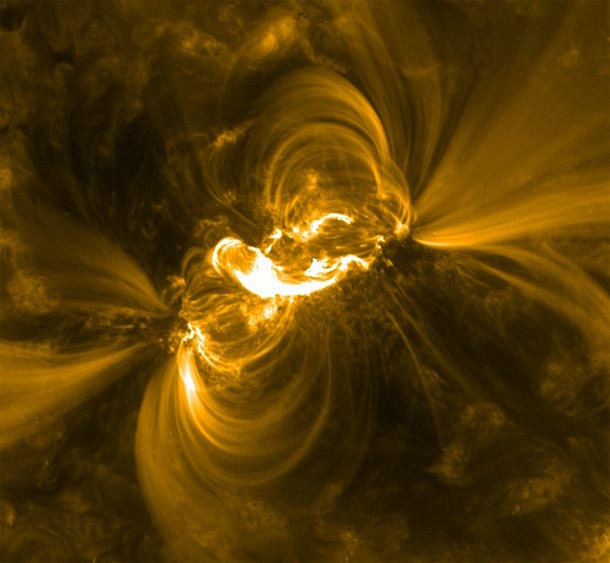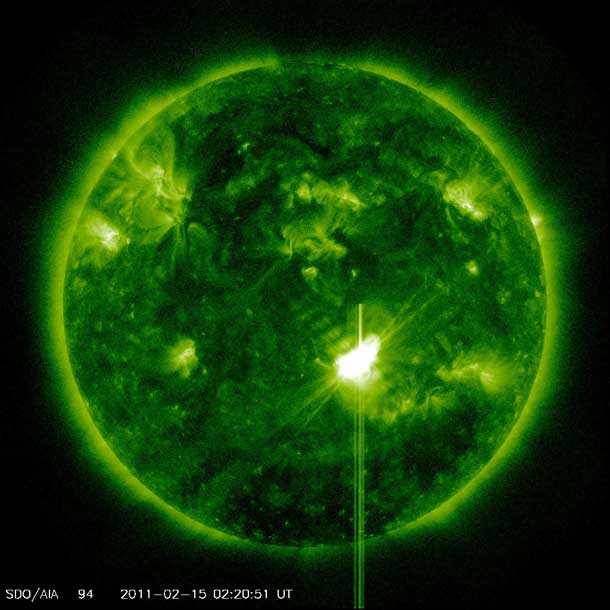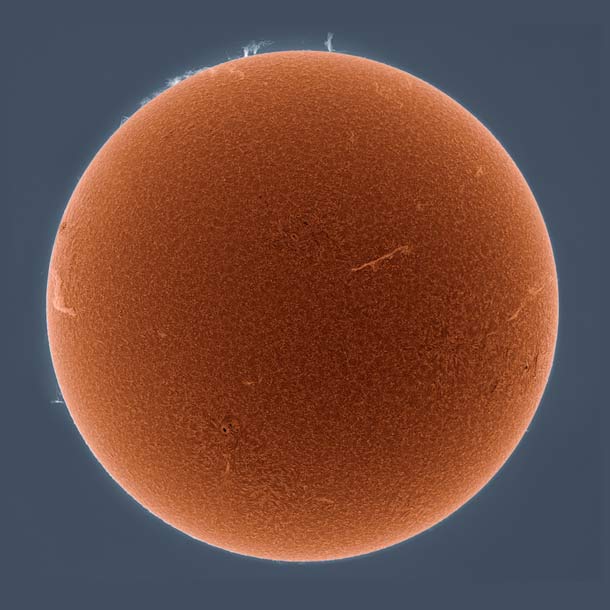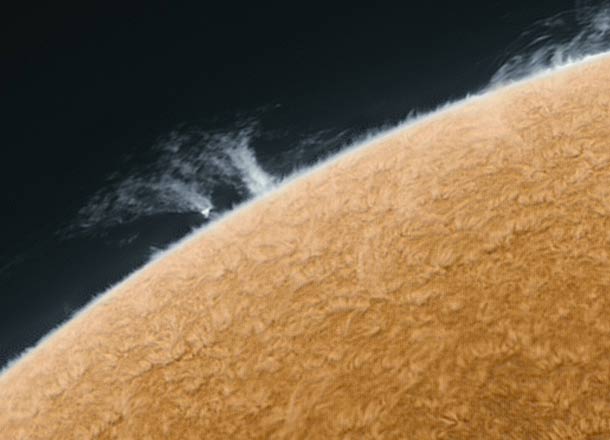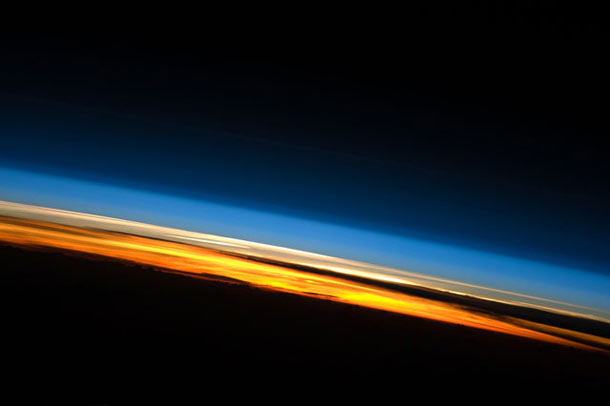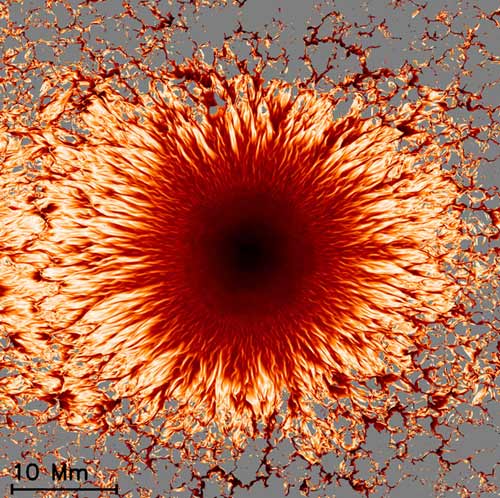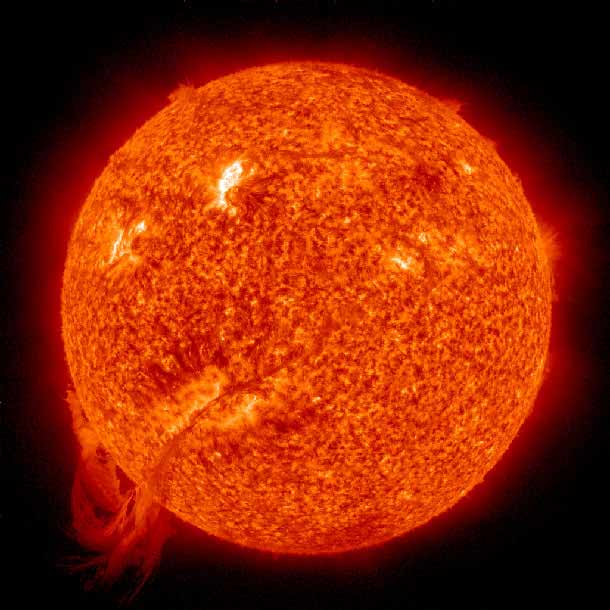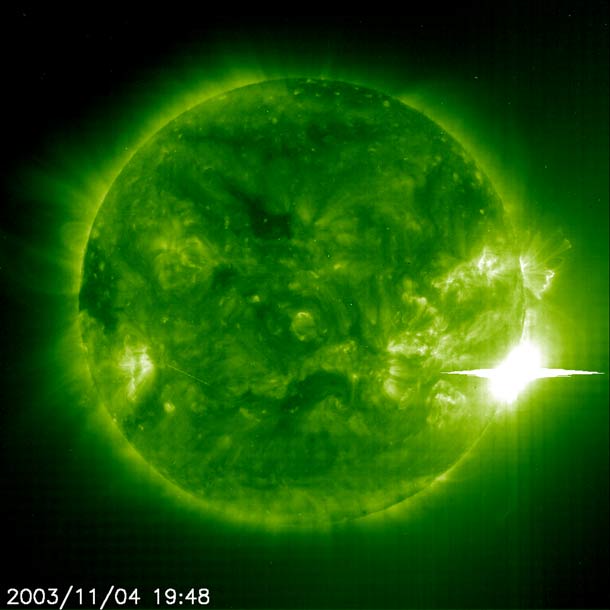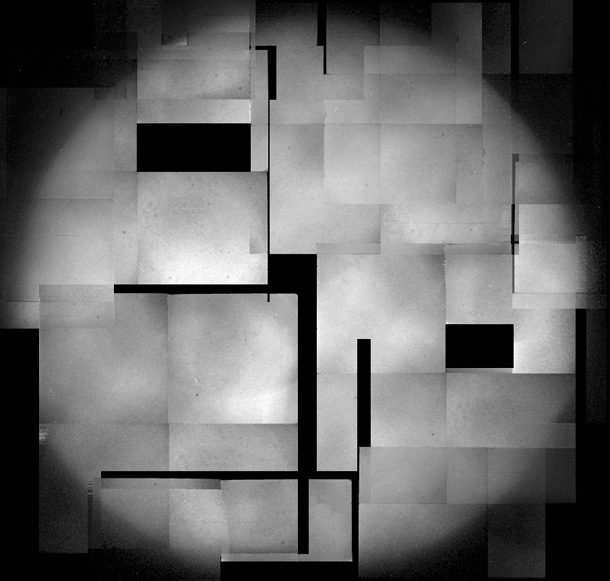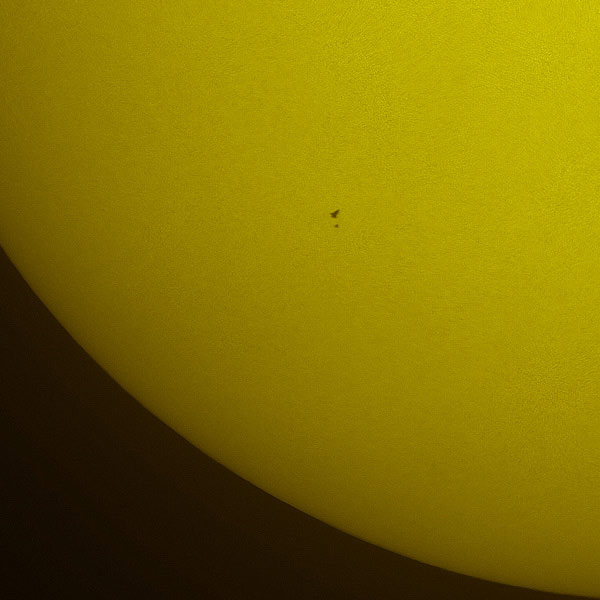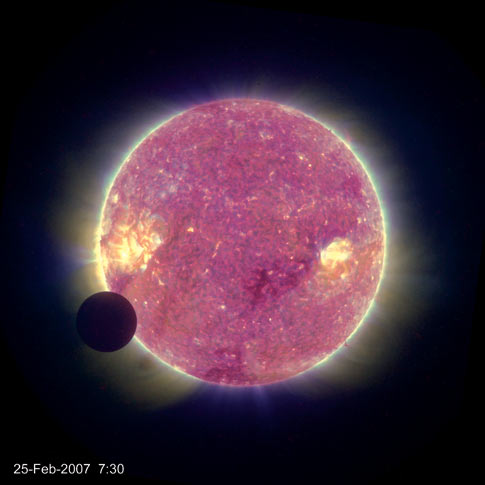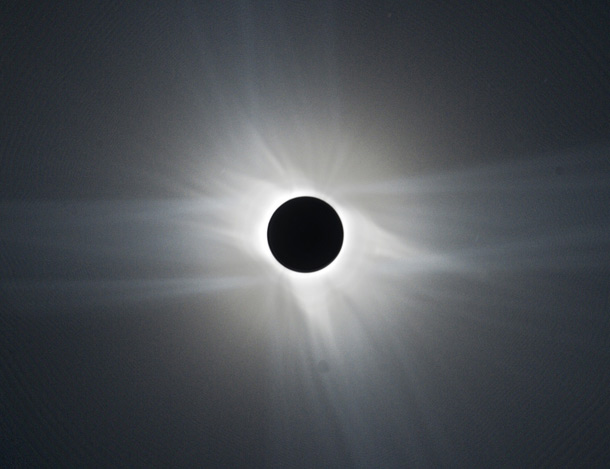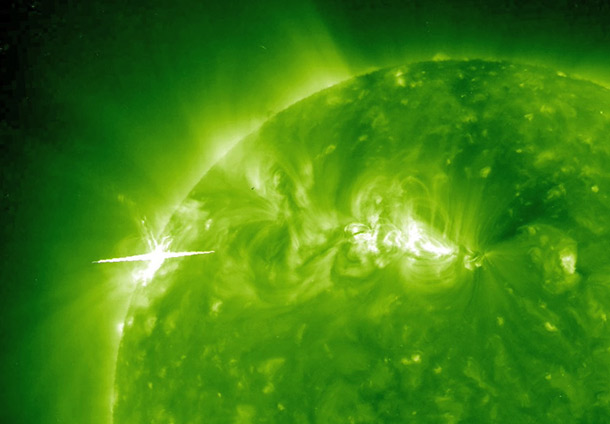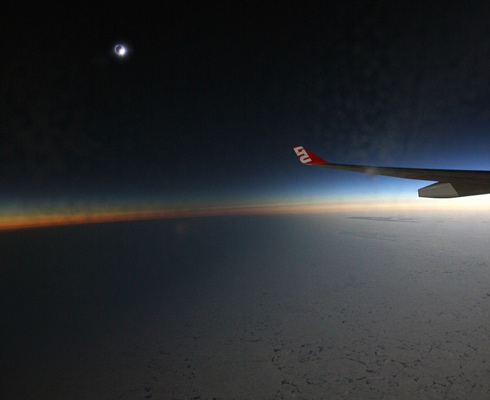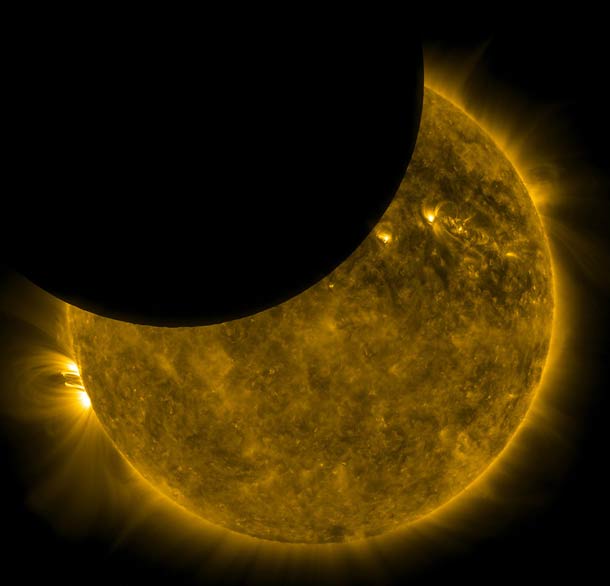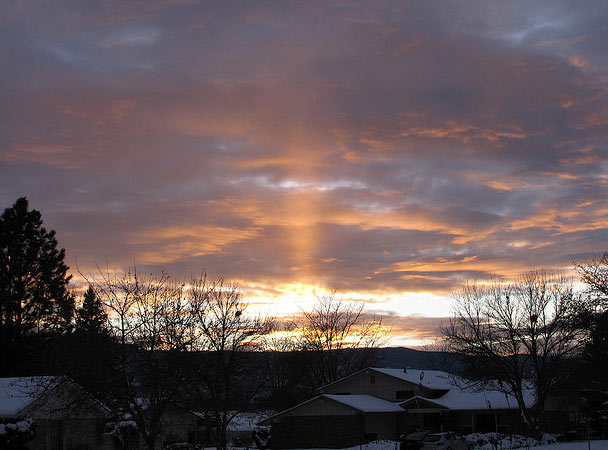Today, June 21, 2001, at 17:16 UTC (1:16 p.m. Eastern US time), the Sun will reach its peak in its northward travels this year. This moment is the summer solstice -- I describe this in detail in an earlier post. Technically, that article is for the winter solstice, but the idea's the same. Just replace "winter" with "summer" and "December" with "June" and "south" with "north". That should be clear enough. It might be easier just to multiply the entire article by -1. Or stand on your head.
Since for the majority of people on the planet this day marks the start (or more commonly the midpoint) of summer, enjoy the gallery below that shows our nearest star doing what it does best: giving us light, giving us beauty, and sometimes, blowing its top.
Use the thumbnails and arrows to browse, and click on the images to go through to blog posts with more details and descriptions.
Bad Astronomy Gallery
(click any image to see it full size)
An eclipse seen from space!
This unusual picture of the Sun was taken by the orbiting Solar Dynamics Observatory during one of the rare times the Earth gets between it and the Sun. What you're seeing is the limb of the Earth taking a bite out of the Sun!
Credit: NASA/SDO
Original blog post
Solar space station
Amateur astronomer Thierry Legault captured the International Space Station as it crossed the face of the Sun.
Credit: Thierry Legault
Original blog post
First Earthward flare of solar cycle 24
In February 2011, a sunspot group numbered 1158 blasted out a big flare, the first that was aimed at us here on Earth during the current colar cycle. It wasn't a big flare as they go, nor did it do any harm here, but it was still pretty impressive. This image in the far ultraviolet shows the looping magnetic field lines of the Sun and the bright flare leaping from them.
Credit: NASA/SDO
Original blog post
Sunspot 1158 gets heard, again
Just days after sending a flare our way in February 2011, sunspot group 1158 blew its top again, this time letting loose an X-class flare, three times more powerful than the first. Again, no damage was seen here on Earth, but this marked the first big flare of the solar cycle, and gave us a taste of things to come over the next couple of years of solar activity.
Credit: NASA/SDO
Original blog post
The Sun in negative hydrogen
Amateur astronomer Alan Friedman captured this astonishing picture of the Sun in the glowing light of hydrogen. He reversed the image to give it a dramatic, eerie effect, producing one of the most amazing pictures of the Sun I've ever seen.
Credit: Alan Friedman
Original blog post
Solar prominences
A close-up of the edge of the Sun's disk from the previous picture by Alan Friedman, showing eruptions called prominences.
Credit: Alan Friedman
Original blog post
Space Station sunset
This is what sunset looks like if you happen to be aboard the International Space Station... and you'd get to see 18 of them a day!
Credit: NASA
Original blog post
Model sunspot
That may look like a sunspot, but it's actually a computer-generated image of one using extremely sophisticated code to model the physics in a spot.
Credit: Matthias Rempel, NCAR
Original blog post
The Sun gets loopy
The gas on and in the Sun is ionized, which means it is stripped of one or more electrons. That in turn means they are enthralled to the Sun's magnetic field, which can be a bit, ah, prickly. In this case, a giant prominence erupted from the surface of the Sun, a towering loop of gas almost as wide as the Sun itself! These pose no threat to us here, but do give us information about the Sun's writhing magnetism... and are also very, very pretty.
Credit: NASA/SDO
Original blog post
Massive X-ray flare
In November 2003, the Sun exploded with fury as a huge flare lit up its disk. That month marked many such flares, but this held the record for the single most powerful X-ray flare ever measured.
Credit: SOHO, NASA, and the ESA
Original blog post
Hubble observes the Sun!
Most people would think that the Sun is too bright to observe with Hubble - and normally they'd be correct. But here was one time, just once, that Hubble did in fact look at the brightest object in the sky. Click the picture to see how this unusual picture was done.
Credit: Glenn Schneider
Original blog post
Atlantis and Hubble
This may not look like much until you look more closely... and then you'll see the Space Shuttle
Atlantis
and the Hubble Space telescope silhouetted against the Sun. Another phenomenal picture by Thierry Legault.
Credit: Thierry Legault
Original blog post
A STEREO transit
One of my all-time favorite picture of the Sun ever: the Moon transiting the solar disk as seen by NASA's STEREO satellite in space.
Credit: NASA/STEREO
Original blog post
Eclipse from 12,000 meters
Astronomer Glenn Schneider is an eclipse chaser, and took this picture of a total solar eclipse from an airplane flying over the Pacific.
Credit: Glenn Schneider
Original blog post
STEREO flare
NASA's STEREO satellite caught a flare from the edge of the Sun blasting out X-rays in March, 2010.
Credit: NASA/STEREO
Original blog post
Plane eclipse
Astronomer Glenn Schneider caught this amazing shot of a solar eclipse at near totality while flying in a plane chartered for the eclipse. Note the wing of the plane, and the edge of the Moon's shadow on the ground!
Credit: Glenn Schneider
Original blog post
Solar eclipse from space
NASA's orbiting Solar Dynamics Observatory caught the Moon partially covering the Sun. Technically, this is a transit and not an eclipse.
Credit: NASA/SDO
Original blog post
Sun Pillar
Your humble blogger took this picture of what is possibly a Sun pillar, an atmospheric phenomenon caused by ice crystals, focusing a beam of sunlight shooting straight up from the horizon.
Credit: me!
Original blog post

